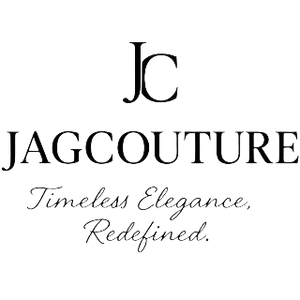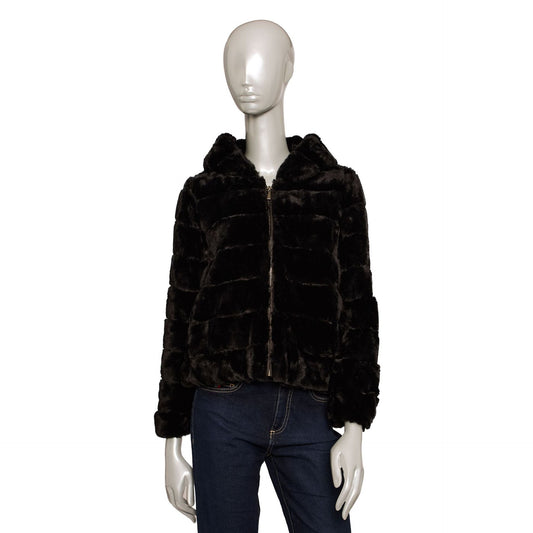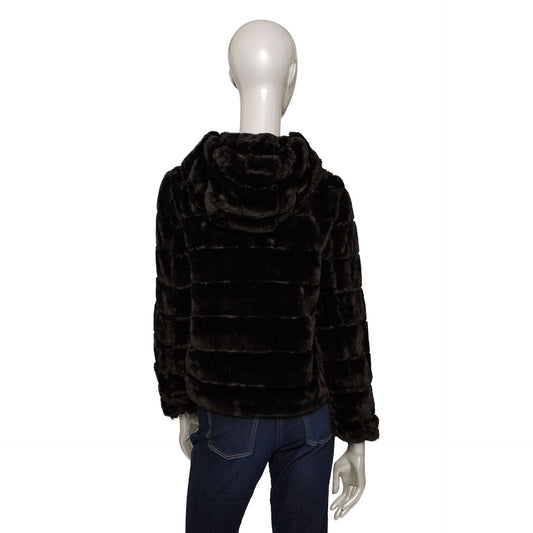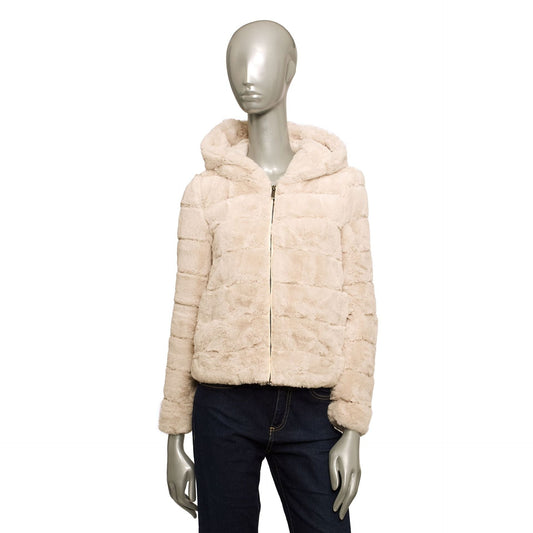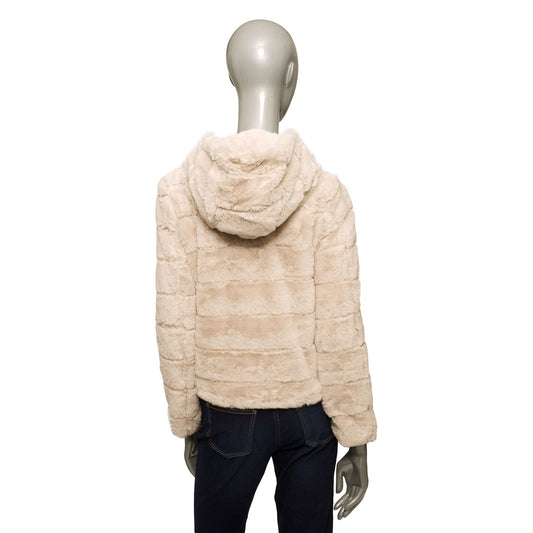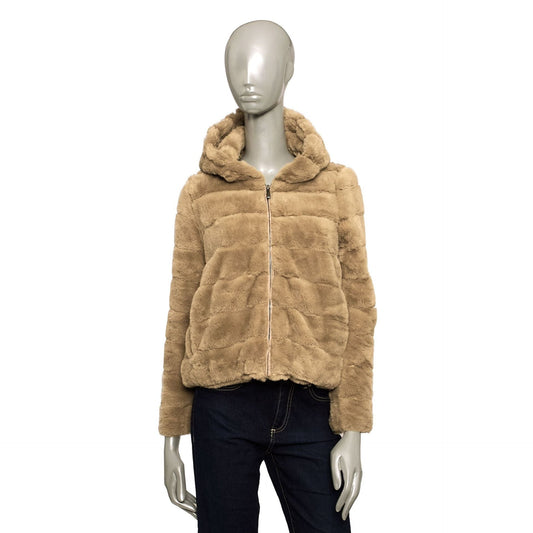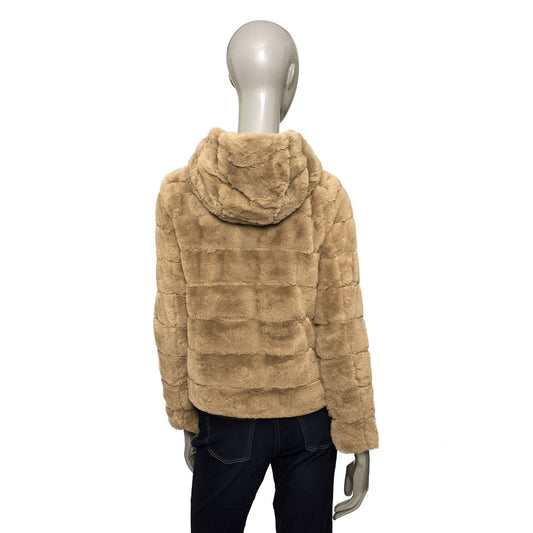
Most people think a bigger closet or more shopping leads to better style. Turns out, nearly 75% of luxury shoppers now do their research and shopping online, and yet their wardrobes are still bursting with unworn clothes. Organizing your closet the right way can actually make you look and feel richer without buying anything new—and the trick has nothing to do with labels or spending more money.
Table of Contents
- Step 1: Evaluate Your Current Wardrobe Essentials
- Step 2: Define Your Fashion Goals And Style Aesthetic
- Step 3: Purge Unwanted Items From Your Closet
- Step 4: Curate A Shopping List Based On Needs
- Step 5: Shop Online For Trendy And Luxury Pieces
- Step 6: Organize And Style Your New Wardrobe
Quick Summary
| Key Point | Explanation |
|---|---|
| 1. Evaluate Your Wardrobe Honestly | Empty your closet and categorize clothing to identify what to keep, donate, or discard. |
| 2. Define Fashion Goals and Aesthetic | Establish a visual mood board and reflect on your lifestyle to clarify your personal style. |
| 3. Be Ruthless in Purging Items | Apply strict criteria to decide what to keep, donate, or discard based on usage and condition. |
| 4. Create a Targeted Shopping List | Identify wardrobe gaps to make intentional purchases that align with your style and needs. |
| 5. Organize and Style Intentionally | Use effective organization methods and create lookbooks to maximize versatility and streamline outfit selection. |
Step 1: Evaluate Your Current Wardrobe Essentials
A step by step wardrobe refresh begins with a thorough and honest assessment of your existing clothing collection. This crucial initial phase helps you understand what you already own, identify potential gaps, and create a strategic plan for updating your style.
Start by completely emptying your closet and drawers. This might seem overwhelming, but creating a blank canvas allows you to see every single item you possess. Spread everything out on a large surface like your bed or floor, which gives you a comprehensive view of your wardrobe. Sort your clothing into clear categories: everyday wear, formal attire, seasonal pieces, and items you haven’t worn in the past year.
As you organize, ask yourself critical questions about each piece. Does it fit well? Is it still in good condition? Does it align with your current personal style and lifestyle? According to research from the University of Kentucky, understanding your body image and selecting garments that enhance your individual proportions is key to creating a functional wardrobe.
Be ruthless during this process. Create three distinct piles: keep, donate/sell, and discard. For the items you decide to keep, consider their versatility and how they can be mixed and matched. Think about color coordination, layering potential, and how each piece complements others in your collection.
The keep pile should consist of high-quality, well-fitting items that make you feel confident. These are the foundation of your refreshed wardrobe. The donate/sell pile includes clothing that no longer serves you but is still in good condition. Consider selling designer or barely worn pieces through online platforms or donating to local charities. The discard pile is for items that are worn out, stained, or damaged beyond repair.
By the end of this evaluation, you’ll have a clear understanding of your current wardrobe composition and be ready to strategically plan your fashion updates. This methodical approach ensures that your step by step wardrobe refresh starts with a solid, intentional foundation.
Step 2: Define Your Fashion Goals and Style Aesthetic
After evaluating your current wardrobe, the next critical phase of your step by step wardrobe refresh involves defining your personal fashion goals and style aesthetic. This transformative process helps you craft a wardrobe that genuinely reflects your personality, lifestyle, and aspirations.
Begin by creating a visual mood board that captures your style inspiration. Use platforms like Pinterest or Instagram to collect images that resonate with your fashion sensibilities. Look beyond just clothing and include images of lifestyles, colors, textures, and overall vibes that speak to you. According to Scarlette Magazine, finding inspiration through visual platforms can help individuals identify styles that truly represent their unique aesthetic.
Reflect deeply on your lifestyle and daily activities. A successful wardrobe refresh isn’t just about looking good, but feeling comfortable and confident in your clothing. Consider your professional environment, personal interests, and social commitments. Are you a creative professional seeking versatile statement pieces? A busy parent needing practical yet stylish clothing? Or perhaps someone who loves experimenting with bold fashion statements?
Identify your style personality by analyzing the clothing that makes you feel most confident. Pay attention to silhouettes, colors, and design elements that consistently draw your eye. Some people gravitate towards classic, timeless pieces, while others prefer trendy, avant-garde looks. Your style might be a unique blend of multiple aesthetics, and that’s perfectly acceptable.
Establish specific fashion goals for the next six to twelve months. These might include building a more sustainable wardrobe, investing in high-quality versatile pieces, experimenting with new color palettes, or reducing clothing waste. Write down these goals and use them as a guiding framework for your wardrobe refresh.
Finally, create a color palette that reflects your personal style. Select 3-5 core colors that complement your skin tone, make you feel confident, and can be easily mixed and matched. This color strategy will serve as a foundational element in curating a cohesive and intentional wardrobe that truly represents your unique fashion identity.
Step 3: Purge Unwanted Items from Your Closet
Purging unwanted items is a transformative step in your step by step wardrobe refresh that goes beyond simple organization. This process helps you create mental and physical space for a more intentional and curated clothing collection. According to ColumbiaDoctors, decluttering can significantly reduce stress and improve overall well-being.
Begin by establishing strict criteria for item removal. Create three definitive categories: keep, donate/sell, and discard. The key is to be brutally honest with yourself about each piece’s value and utility. Ask yourself pointed questions: When was the last time I wore this? Does it fit my current body and style? Would I purchase this item again today?
Implement the one-year rule: If you haven’t worn an item in the past twelve months, it likely doesn’t deserve a place in your refreshed wardrobe. This applies to everything from casual t-shirts to formal wear. Exceptions can be made for truly special pieces like wedding attire or sentimental garments, but these should be minimal.
Inspect each item carefully for signs of wear and tear. Look for permanent stains, stretched-out fabrics, missing buttons, or irreparable damage. Be realistic about repair potential. While minor fixes are worthwhile, extensive repairs might indicate it’s time to let go. Garments with significant wear should move to the discard pile, preferably through textile recycling to minimize environmental impact.
For items in good condition that no longer serve you, consider responsible disposal methods. Donate gently used clothing to local shelters, charity shops, or organizations that support communities in need. Some pieces might have resale value through online platforms, allowing you to recoup some investment while giving clothing a second life.
As you purge, organize your remaining items by category and color. This not only makes your closet visually appealing but also helps you understand exactly what you own.
This table summarizes common donation, selling, and discard options for the clothing you remove during your purge, showing their purpose and potential benefits.
| Removal Method | Purpose | Benefits |
|---|---|---|
| Donate | Give gently used clothing to shelters or charity shops | Supports those in need, reduces waste |
| Sell | Resell gently used or designer items online | Earns money, gives clothing second life |
| Discard | Recycle worn out, damaged items responsibly | Minimizes environmental impact, declutters |
| Repair | Fix minor damage to extend lifespan | Saves money, keeps favorites longer |
| Repurpose | Use old clothing for rags or craft projects | Reduces trash, sparks creativity |
Remember, purging is more than just removing clothes. It’s about creating a wardrobe that truly reflects your current style, lifestyle, and personal growth. By the end of this process, you should feel lighter, more organized, and excited about the fashion possibilities ahead.
Step 4: Curate a Shopping List Based on Needs
After purging your closet, the next crucial phase in your step by step wardrobe refresh is creating a strategic shopping list that addresses genuine wardrobe gaps. This methodical approach prevents impulsive purchases and ensures every new item serves a purposeful role in your evolving style. According to the University of California, Merced’s Financial Wellness Center, reviewing your closet helps identify precise needs and promotes sustainable shopping practices.
Start by analyzing the holes in your current wardrobe. Compare your existing pieces against your defined style aesthetic and lifestyle requirements. Pay close attention to versatile items that can be mixed and matched across multiple outfits. For instance, if you discovered during your closet evaluation that you lack professional blazers or comfortable yet stylish everyday basics, these become priority additions to your shopping list.
Divide your shopping list into clear categories that reflect different aspects of your life. Create distinct sections for professional wear, casual clothing, special occasion pieces, and seasonal essentials. This structured approach prevents random shopping and ensures you’re intentionally building a cohesive wardrobe. Consider the color palette you established earlier, making certain new items complement your existing collection.
Be specific about each potential purchase. Instead of writing “black pants,” detail exactly what you need: “High-waisted, tailored black trousers with a slim leg cut, suitable for office and evening wear.” This level of specificity helps you stay focused when shopping and reduces the likelihood of impulse buying items that don’t truly serve your wardrobe goals.
Set a realistic budget for your wardrobe refresh. Allocate funds across different clothing categories, prioritizing high-quality, versatile pieces that offer maximum wearability. Consider investing more in foundational items like well-cut blazers, quality denim, and comfortable shoes, while being more budget-conscious with trend-driven pieces that might have a shorter style lifespan.
Remember that a curated shopping list is a living document. As you acquire new pieces, continuously reassess and adjust your list. The goal is not to fill your closet but to deliberately enhance your personal style with pieces that bring joy, comfort, and confidence. By the end of this step, you’ll have a clear, intentional roadmap for building the wardrobe of your dreams.
Step 5: Shop Online for Trendy and Luxury Pieces
With your carefully curated shopping list in hand, it’s time to navigate the digital landscape of online luxury fashion shopping. According to McKinsey research, over 75% of luxury shoppers now use smartphones for product research and purchases, making online shopping more sophisticated and accessible than ever.
Start by creating accounts on multiple luxury online platforms. Focus on reputable websites that offer comprehensive size guides, detailed product descriptions, and high-resolution images from multiple angles. Look for platforms that provide virtual try-on features or detailed measurement recommendations. Pay close attention to return policies, ensuring you have flexibility if items don’t meet your expectations.
Utilize advanced filtering options to match your specific shopping list requirements. Input precise measurements, preferred color palettes, and style preferences to narrow down selections efficiently. Pro tip: Use browser extensions that track price drops and offer cashback on luxury purchases. These tools can help you maximize value while staying within your established budget.
Carefully examine product materials, construction details, and fabric compositions. Luxury pieces are an investment, so understanding the craftsmanship behind each item is crucial. Look for detailed product descriptions that explain fabric origins, manufacturing processes, and unique design elements. Read customer reviews critically, paying attention to comments about fit, quality, and potential discrepancies between online representation and actual product.
To enhance your online shopping experience, learn more about how luxury brands are adapting to new-age consumers, which can provide insights into emerging trends and purchasing strategies. Take advantage of virtual styling consultations offered by many luxury platforms. These personalized services can help you make more informed decisions and ensure your selections align perfectly with your defined style aesthetic.
Track your purchases meticulously. Create a digital spreadsheet documenting each item’s details: brand, price, expected delivery date, and specific styling intentions. This approach helps maintain accountability to your original wardrobe refresh plan and prevents impulsive buying. By the end of this step, you should have a collection of carefully selected pieces that seamlessly integrate into your refreshed wardrobe.
Step 6: Organize and Style Your New Wardrobe
As the final phase of your step by step wardrobe refresh, organizing and styling your new collection transforms individual pieces into a cohesive, expressive fashion ecosystem. According to research published in Sustainability, thoughtful wardrobe management can significantly enhance personal creativity and promote more intentional fashion practices.
Begin by creating a strategic organizational system that reflects your lifestyle and style aesthetic. Invest in high-quality hangers that maintain garment shape, with velvet or non-slip surfaces preventing delicate pieces from sliding. Separate clothing by category: professional wear, casual items, evening attire, and seasonal collections. Within each category, arrange items by color gradient, creating a visually appealing and functional wardrobe landscape.
Utilize vertical space efficiently with tiered hangers, shelf dividers, and clear storage boxes. Store seasonal or less frequently used items in breathable garment bags or vacuum-sealed containers to protect delicate fabrics from dust and potential damage. Consider adding cedar blocks or lavender sachets to maintain fabric freshness and repel potential moths.
Develop a systematic approach to mixing and matching your new pieces. Create a digital or physical lookbook documenting potential outfit combinations. Take photographs of successful ensembles, noting specific accessories or layering techniques that elevate each look. This visual reference becomes an invaluable tool for effortless styling, helping you maximize the versatility of your refreshed wardrobe.
Pay special attention to accessory organization. Install hooks or specialized racks for belts, scarves, and statement jewelry. Use clear acrylic dividers for smaller items like sunglasses and watches, ensuring each piece remains visible and easily accessible. A well-organized accessories collection can dramatically expand your styling possibilities.
Implement a quarterly wardrobe review process. Set calendar reminders to reassess your collection, removing items that no longer serve your style or lifestyle. This ongoing maintenance ensures your wardrobe remains dynamic, reflecting your evolving personal aesthetic.
 By maintaining this organizational system, you transform your closet from a simple storage space into a personalized fashion sanctuary that celebrates your unique style journey.
By maintaining this organizational system, you transform your closet from a simple storage space into a personalized fashion sanctuary that celebrates your unique style journey.

Discover Your Dream Wardrobe With Jag Couture London
Is your closet holding you back from the style confidence you want to achieve? If you struggled with sorting through old items or building a shopping list that matches your vision, you are not alone. Many fashion lovers feel overwhelmed at the start of a wardrobe refresh, especially when trying to find luxury and trendy pieces that fit both their lifestyle and aesthetic. Throughout this article, you learned to define your unique goals, purge what no longer suits your needs, and shop intentionally for standout fashion essentials.

Now is the perfect time to put these steps into action and finally upgrade your collection. Browse the newest arrivals and curated collections at Jag Couture London to fill any gaps you identified and experience a seamless, inspiring shopping experience. Our site offers personalized product recommendations, trending styles for every preference, and a visually stunning interface to help make your selections easier. Visit the home page and start building the wardrobe you have always dreamed of. Take charge of your style refresh today and enjoy exclusive access to fresh, on-trend womenswear before everyone else.
Frequently Asked Questions
What is the first step in refreshing my wardrobe?
Start by thoroughly evaluating your current wardrobe. Empty your closet and drawers, categorize your clothing, and sort them into keep, donate/sell, and discard piles to understand what you already own and identify gaps in your collection.
How do I define my fashion goals and style aesthetic?
Create a visual mood board using platforms like Pinterest or Instagram to capture styles, colors, and vibes that resonate with you. Reflect on your lifestyle and identify clothing that makes you feel confident, establishing specific fashion goals for the next six to twelve months.
What criteria should I use to purge unwanted items from my closet?
Implement strict criteria by categorizing items into keep, donate/sell, and discard. Evaluate each piece based on fit, current style, and frequency of wear. Consider the one-year rule, where items not worn in the last twelve months are likely candidates for removal.
How can I effectively organize my new wardrobe?
Organize your wardrobe by separating clothing into categories such as professional wear, casual items, and seasonal collections. Utilize quality hangers, tiered storage solutions, and clear boxes to maintain garment shape and visibility, while arranging items by color for a visually appealing layout.
